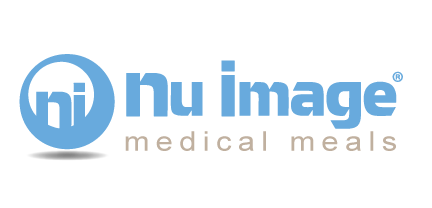Hunger vs. Craving
Oct 20, 2011
Hot, salty French Fries...maybe it's warm, gooey chocolate brownies, just out of the oven…are you suddenly hungry? Or are you just craving something sweet or salty now? Can you tell the difference?
We often confuse these terms -- hunger and craving -- but there really is a big difference between the two. And, before you can get your weight under control (and keep it there) you need to understand the difference between them how to identify when you're experiencing one or another, and manage your responses accordingly.
What exactly is hunger?
Hunger is a biological need resulting from a low level of glucose in the blood stream. True hunger is associated with a growling stomach, feeling of emptiness in the stomach, light-headedness, dizziness and/or feelings of weakness.
What exactly is a craving?
Craving is an emotional need resulting from any number of triggers such as smells, sadness, boredom, etc., and/or a physical need.
It’s important to understand that cravings can be emotional and brought on by a specific emotional trigger. But, there are also physical cravings where your body is craving a specific nutrient. These types of cravings occur when your body is lacking something or is in some way compromised. For example, if you find yourself craving something salty it could be because your body is actually lacking the sodium (if you’ve been sweating excessively or vomiting or had diarrhea). Or it could be because you’re stressed and your adrenal glands are overworked. Physical cravings are a way of letting you know something is not in balance within your body. So if you find yourself with a specific, chronic craving you may want to go to your doctor to have it checked out.How to tell if you are truly hungry:
-
The desire to eat doesn’t go away, even if you wait.
Diet-to-Go Tip: Try the 10-minute rule: set a timer, wait 10 minutes. If you still feel hungry after those 10 minutes, you are truly hungry.
-
The desire for food intensifies while you wait.
-
Even the thought of eating something not that pleasant (e.g., lima beans) still makes you want to eat.
How to tell if you are just having a craving:
-
You don’t feel any hunger “pains” or experience any physical hunger symptoms.
-
The thought of eating goes away when you are distracted by other things.
-
You feel “emotional” about eating a certain type of food (e.g., happy, comforted, guilty, etc.) .
-
You desire something very specific and not healthy, so not a particular nutrient but more a texture or consistence (e.g., sweet, crunchy, etc.).
What to do:
Hunger: If you are truly hungry, you need to eat. If you ignore true hunger for too long you will (most likely) overeat, devouring everything in sight. Try and make it a healthy food choice, and eat slowly so your body can enjoy the food (and so you don’t overdo it).
Craving: When a craving comes on, it’s hard to ignore. But if you learn how to manage cravings (so they don’t turn into binges), you will be much more successful at losing weight and keeping it off.
Tips to Manage Cravings:
-
First determine if it’s physical or emotional. If you determine it is emotional, identify the emotion that is causing the cravings and take steps to try to dissolve your craving in some other way than giving in to the food.
DTG Tip: If your craving is stress induced, try to do something to relive your stress such as taking a long hot bath, going for a walk, doing relaxation exercises, or yoga. If it’s sadness or boredom, call a friend, read a good book or lose yourself in a favorite movie.
-
If you feel like you just HAVE to have something sweet, then make it a healthy sweet choice. For example if you are really craving cold and smooth, choose some non-fat frozen yogurt. Your body doesn’t know if it’s having a bowl of full-fat ice cream or something much healthier.
-
If it’s crunchy you want/need, try pickles instead of chips.
-
And if nothing else will do…have a little bit of what you’re craving. But make sure you portion it out. So for example if you decide you just have to have chocolate chip cookies and nothing else will do, then go ahead and have a cookie. But stop at one. Take one out of the package and then wrap up the package and walk away. Brush your teeth. Move on.
Learning when you’ve had enough
Another important component in learning how to manage your hunger and cravings is to know when you have had enough. Listen to your body. You should be satisfied not stuffed or full. Remember it takes about twenty minutes to feel full so eat slowly, sit down to eat, and enjoy the taste and smell of the food.
You can also try using the Hunger/Fullness Rating Scale:
The best time to eat is at level 3 or 4. At this point you are experiencing physical hunger, and your body is telling you that you need food. You still have enough control to make smart choices and control your portion sizes. And then stop when you hit 6 and 7. You should always finish a meal or snack feeling satisfied, not stuffed; comfortable, not comatose.
Remember, It’s ok to feel hungry from time to time. It's a normal human response; slight hunger pains will not hurt you.
Take Away:
It’s ok to feel hunger; it’s ok to have cravings, all normal. But learning how to identify what you’re feeling (true hunger or craving) and how to deal with it in a healthy way will be the key to long term weight loss success.
Author: Sue Ridgeway
-









